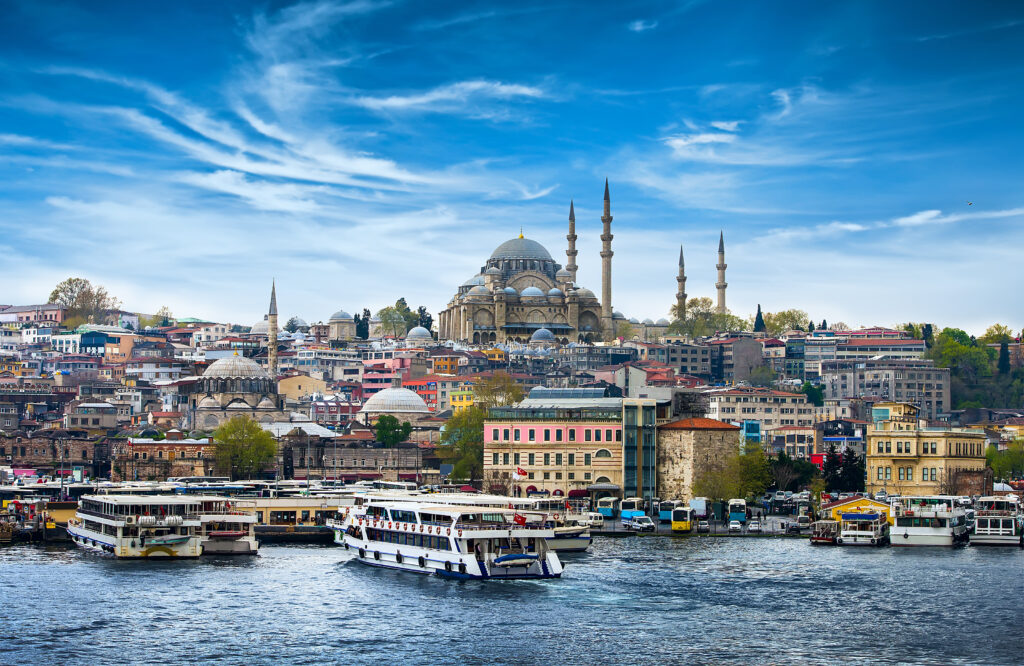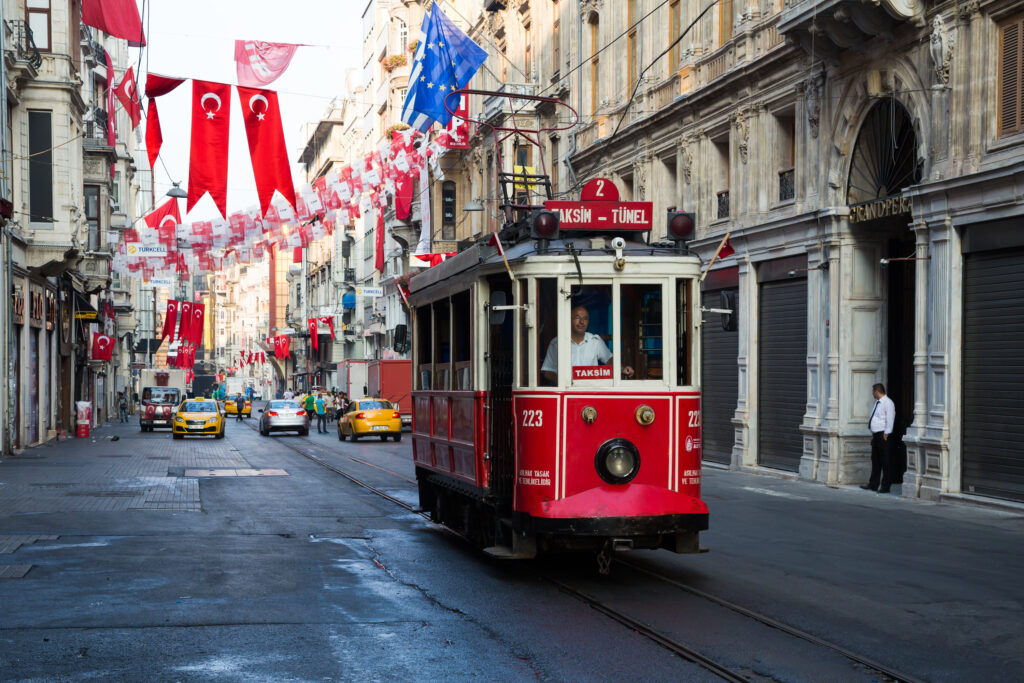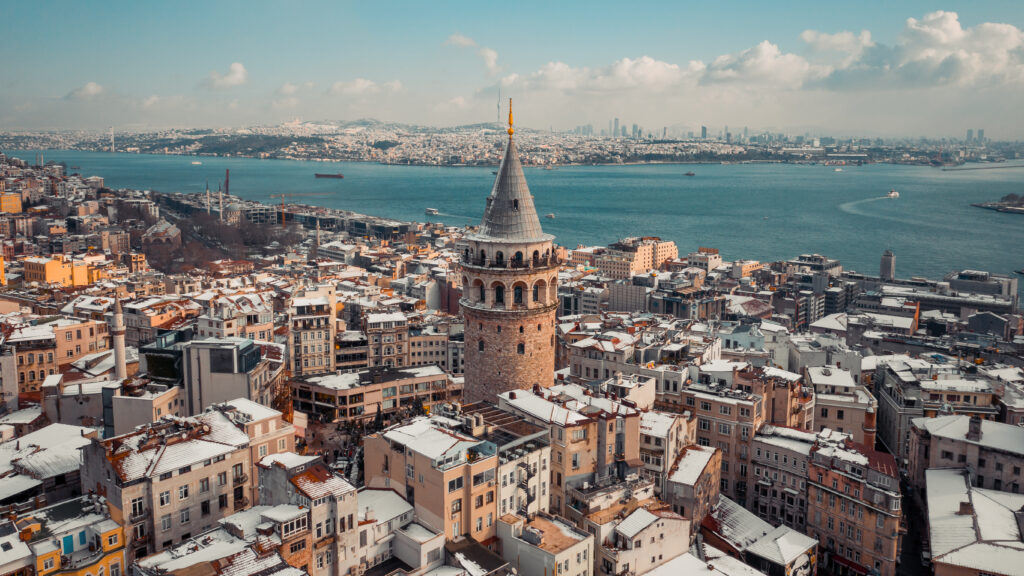Amid financial instability, HVACR players in Turkey stay positive, banking on resumed construction activity in the region, says Nafeesa Mohammed, Features Writer, Climate Control Middle East
The Turkish air conditioning and heating sector has developed rapidly in terms of production and capacity, on the back of an increase in population and standard of living in the country. Meanwhile, the post-pandemic recovery of the construction sector and demand from importers, worldwide have resulted in manufacturers in Turkey feeling the need to ramp up technology and supply chains. Whilst rising inflation and economic fluctuation remain a challenge, overall growth remains bullish, with HVACR exports crossing USD 3.4 billion in the first half of 2022, up 11.7% from a year earlier.
Industry players credit this growth to the fact that many postponed country-wide and global projects have restarted. If one were to go by numbers, construction permits increased by 27.8% to 709,936 units in 2021 in Turkey, resulting in 24% growth in the sales of packaged air conditioning units – splits, VRFs and rooftop units, with a corresponding value of USD 883.1 million.

Apart from growing exports, the last year has seen new partnerships and transfer-of-technology (TOT) tie-ups with many international brands, improving Turkey’s HVAC manufacturing capabilities. Says Ayk Serdar Didonyan, Board Chairperson, ISKID (the Turkish Air Conditioning and Refrigeration Manufacturers’ Association): “Turkish HVAC manufacturers were able to custom-produce SKD (Semi-Knocked Down) and CKD (Completely Knocked Down) production capability within the country, enhancing the HVAC sector’s competitiveness. Following highly populated countries, such as China, Japan and the United States, Turkey is among the largest and most significant markets in the global air conditioning industry.”
Uniquely situated at the crossroads of the Middle East and Europe, Turkey is an ideal location for HVACR innovations, as it is home to diverse climatic conditions – of extreme summers and winters. It is widely considered as being amongst the largest and most significant global air conditioning markets. As Didonyan puts it, “The Turkish HVAC&R industry is expected to achieve a total amount of USD 60 billion, with exports worth USD 25 billion and a domestic market size of USD 35 billion in the next decade.”
MARKET OVERVIEW
According to ISKID, in addition to the increase in demand for splits and VRF units, the commercial cooling and heating equipment segment is rapidly growing; for example, industrial refrigeration systems and heat pumps are seeing an increase in demand. As per ISIB (Turkish HVAC&R Exporters Association) data, there was 31.7% growth in industrial refrigeration systems and components in 2021 and a 21% growth in air conditioning systems and components in 2021.

Growth sectors for HVAC included commercial and community spaces, such as hospitals & pharmaceuticals, hotels, airports, business centres, shopping malls, restaurants, residences, offices, and commercial and governmental buildings. In the words of Seda N Temelli, Export Manager, ACS Klima, Turkey’s production capacity and product varieties are growing in response to the uptick in demand from different sectors, as facilities like hospitals, schools, and malls reopen, post-pandemic. However, demand from overseas prevails. For example, ACS exports 80% of its products worldwide, she says.
If one were to take a micro-look at the growth the country achieved, with COVID-19 forcing most employees to work from home, the split-type air conditioner market at retail and wholesale sales increased manifold, resulting in domestic production of split-type units crossing two million in 2021. Didonyan says, the country recorded 42% growth in sales of residential single-split and multi-split models. The export market also saw record growth of 120%, he says.
Turkey also remained the largest VRF market in Europe throughout the pandemic. Owing to Euro and US Dollar exchange rate parity, demand for indoor and outdoor VRF units grew, whilst the mini-VRF market achieved 20% growth with increased housing in coastal areas, Temelli says. Didonyan adds to this by saying, “Compared with the last three years, the all-time-high export rate in 2021 signifies Turkey’s success as a regional distribution base for VRF systems.” He notes that as the number of manufacturers and new export regions increased, export numbers also increased. “We predict that export sales will exceed the sales in the domestic market within a couple of years, as domestic manufacturers focus on foreign markets,” he says.
GROWING EXPORT MARKET
Despite challenges presented by the pandemic and economic fluctuations, Turkish manufacturers have seen growing demand, especially from the international markets. Istanbul-based Kenan Kus, Market Research Consultant, BSRIA Worldwide Market Intelligence, says that vital export markets for Turkish manufacturers include Europe, CIS countries and GCC region countries. Spurred by growth in demand, Turkish producers reportedly have begun to put into action all pending and suspended investments, Temelli says. New product development and R&D have taken centre stage, as the threat of new virus variants persists. This has positively impacted exports. As Temelli notes: “For example, as of 2021, Turkish producers have entered into new markets, to which Turkey had previously exported almost nothing. In addition, intense construction activity in the Middle East countries especially offers great opportunities for the sector.”

Meanwhile, the African continent also offers excellent future opportunities to the sector. “Manufacturers are rapidly shifting their commercial activities towards the Middle East and African countries, as demand increases for efficient air conditioning products that meet the operational requirements of harsh climates of the region,” Temelli says.
ECONOMIC FLUCTUATIONS
The Turkish economy was hit hard by the currency shock and increasing inflation rates towards the end of 2021, which primarily affected consumer spending and investment decision. However, the manufacturers believe that though it does not create any challenges to demand from export markets, it is challenging for price stability, Kus says. “With inflation increased to 13.58% in December 2021 and 11.10% in January 2022, which is over 50% increase year on year, purchasing power has been decreasing,” Kus says. “With the economic uncertainty expected to continue in the coming months, it might hamper new consumer purchasing decisions in the coming years.”
Concurring with Kus, Didonyan says there is no demand-side problem from export markets. “But there are difficulties establishing stable prices in the prevailing inflationary environment,” he says. “Our exporters may face a capital meltdown, if they cannot make the right cost calculations.
“Meanwhile, the increase in supply chain, raw material and logistics prices, which escalated with the Russia-Ukraine war, adversely affects the HVACR industry. Currently, there is more product supply shortage than product sales.”
INNOVATION POST-PANDEMIC
Turkey’s HVAC&R industry has made rapid progress in its production capacity despite all the adversities, Didonyan says. New products and features to improve indoor air quality (IAQ) against possible virus threats became the focus for manufacturers, funnelling more investment into R&D centres. Didonyan says: “In this process, our members innovated products and technologies, such as indoor air quality sensors, air purification devices, HEPA and UV-C units for ducted air conditioners, portable hygienic air conditioners and ultraviolet LED air cleaners for air conditioners. And vaccine storage rooms have been developed and attracted attention.”
TAKING ON THE CLIMATE CHANGE CHALLENGE
As a candidate member of the EU, Turkey follows all EU legislation, such as new EER requirements and F-Gas legislation for HVAC manufacturing, Kus says. Most modern air conditioners have higher efficiency, and many of them no longer rely on harmful refrigerants, which automatically makes them much more environmentally friendly, Temelli confirms. The consensus is that the HVAC industry must adopt eco-friendly approaches to prevent climate change and successfully tackle its effects for a better future. “New HVAC technologies, such as solar solutions, geothermal systems and the ones sourcing energy from natural gas are some we are excited to view,” Temelli says.
According to ISKID, one of the significant issues on the Turkish HVAC sector agenda is the carbon border adjustment mechanism, which will be implemented within the scope of the European Green Deal, as part of fighting climate change. “Within this framework, Turkey must take immediate action to promote R&D projects that align with its carbon-neutrality goal, invest in clean energy in the HVAC&R industry and other industries, employ eco-friendly fluids in the refrigeration field, and turn it into zero-carbon industrial processes,” Didonyan says. “We believe that further concrete actions will be taken considering these encouraging developments in the coming period.”
THE MIDDLE EAST CONNECTION
Sharing close geographic and weather conditions with the Middle East region offers Turkish manufacturers the unique ability to meet the operational requirements of the harsh climate in the region. This is evident from the large number of innovations developed to meet the need of Middle East customers. Elaborating on this, Temelli says, “We developed products that fully compensate for the region’s high temperature and humidity levels while ensuring maximum energy efficiency through intelligent automation systems. We also introduced dehumidifiers, specifically developed for spaces containing pools, to ensure that the humidity balance in the environment reaches the healthiest conditions.”
One of the key factors contributing to the Middle Eastern market is the increasing level of construction activities, with growing income levels, and the hot and humid climatic conditions in the region. Little wonder then that the Middle East and Africa (MEA) HVAC market is projected to generate a revenue of USD 10.1 billion by 2024, Temelli says.
Many manufacturers are setting up shop in Turkey due to its proximity to the GCC region. Daikin recently announced that it has invested EU 13 million to start the production of VRV systems for the Middle East at its new factory in Turkey, which became operational in May this year. According to Daikin, the VRV market across the region is expected to grow in the future.
According to ISKID, even though Turkey’s primary HVAC&R markets are Germany, the UK, Italy, France, Romania and other EU countries, the Middle East countries are becoming the most significant potential market for Turkey. “We would like to improve our trade volume and relations with Middle East countries,” Didonyan says.
WHAT THE WAY AHEAD LOOKS LIKE
Temelli says the Turkish HVACR industry is attracting many international customers with its large production capacity, high quality and favourable labour costs, an open market integrated with the world, and investment incentives offered by the government. The country, she said, provides attractive opportunities to foreign customers. Turkey, she said, remains an attractive destination for HVAC manufacturers to provide access to over a billion consumers from Europe and the Middle East. Sharing the same outlook, Kus says, international players, like Arcelik, Vestel, UNTES, Aldag and Daikin are strengthening their production capacity in the country, and betting on the export markets, including the Middle East, EU and CIS countries.
Copyright © 2006-2025 - CPI Industry. All rights reserved.